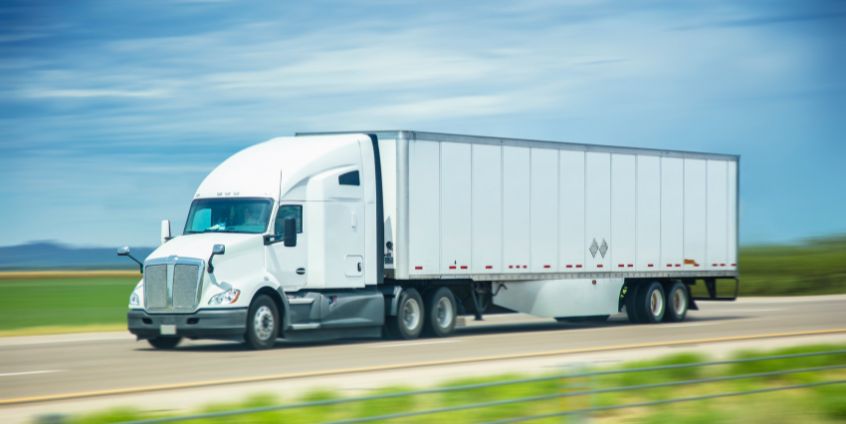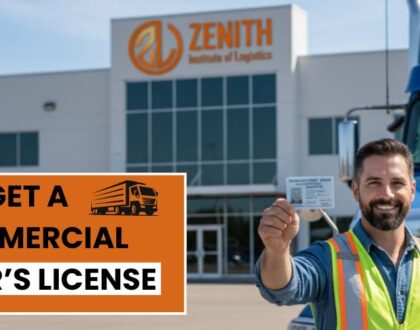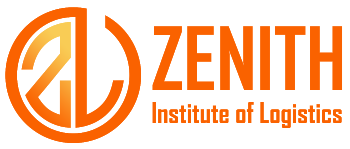Do You Need a CDL to Drive a Straight Truck?

Understanding the licensing requirements for driving commercial vehicles is crucial for observing, complying with, and maintaining safety in this area.
The critical issue is determining whether a Commercial Driver’s License is required to drive a straight truck. In the United States, a straight truck has its carriage accommodation mounted on the same chassis that supports the cab, with no articulation between the two.
They are mostly delivery, box, or big moving trucks used in logistics and transportation. Here, we check when one needs a CDL to operate a straight truck. We shall focus on regulatory guidelines and the rules.
Understanding Straight Trucks
The straight truck got its name because it involves a single, solid frame. It is also known as a box truck or a cube truck. Unlike a tractor-trailer, the car’s compartment is permanently attached to the same chassis as the cab, making it preferable for moving about in the city, where large trailers are inconvenient for conducting local deliveries.
Examples of straight trucks are the many delivery trucks that companies like UPS and FedEx have popularized rapidly. The other examples include the big furniture delivery trucks and the refrigerated trucks carrying perishable goods. Their presence can be easily felt in the communities where people live and on the city streets, thus enabling home and business delivery.
What is CDL?
A CDL is a special kind of motor vehicle license needed in the United States to enable a person to drive heavy and oversized vehicles so that the drivers meet specific standards of expertise and safety. A class or CDL class determines what vehicle a driver can operate. The only class that allows driving a truck when the GVWR exceeds 26,000 pounds and while towing a trailer or vehicle that is also over 10,000 pounds is a Class A CDL. Class B CDLs are for drivers of cars like straight trucks that weigh in at 26,000 pounds or more but do not tow big trailers.
When is a CDL Required for a Straight Truck?
You can drive one vehicle under a class B CDL, and the weight rating is 26,001 pounds. Several straight trucks are significantly in number, specifically in highly serviced areas. One everyday use could be transporting large furniture movers or heavy equipment carriers.
If the straight truck transports passengers or hazardous materials, determining whether a Commercial Driver’s License is required becomes crucial. In that case, the driver must have special endorsements: Passenger (P) for the mentioned passengers and Hazardous Materials (H) for the materials.
Besides that, it is also likely that the requirements for the activity applied would be far divergent when comparing the requirements for intrastate driving with those for interstate driving. Although regulation of the federal laws is very minimalist, there are additional state regulations that would bring about other requirements that the driver needs to know and observe for the driver to be legal behind the wheel of a straight truck.
Situations Where a CDL is Not Required
Not every straight truck needs a particular driver’s license to operate it. Straight trucks, such as smaller delivery trucks or moving vans that gross under 26,000 pounds, do not generally require a CDL.
It covers most business delivery vehicles in that class and rental trucks for household moves. These positions include local delivery drivers, moving company employees, and workers at various other types of utility services.
How to Obtain a CDL
Here is a step-by-step process for obtaining a CDL:
- Eligibility criteria: The minimum age requirements for CDL application are 18 years to drive within state lines or 21 years to drive across state lines. The applicant must also meet the physical health standards disclosed during a medical examination.
- CDL training programs: Attend an accredited CDL course to acquire the required skills and driving experience.
- Written tests and skills tests: To obtain a learner’s permit, you must pass a written knowledge test, followed by a practical skills test to acquire the CDL.
- Endorsements and qualifications: You may need additional endorsements for specific vehicles or load circumstances requiring extra testing.
- Tips for preparation and study resources: A study guide, practice test, and various training sessions are among the best resources for serious preparation.
Benefits of Having a CDL
Indeed, a Commercial Driver’s License opens up many more employment opportunities, especially within the trucking and transportation domains. The CDL makes one versatile enough to pick up driving jobs in many places and in different vehicles, for instance, different types of straight trucks.
The transportation and trucking industry is often in high demand and offers excellent job security. Driving straight trucks with a Commercial Driver’s License (CDL) offers numerous benefits, highlighting the value of this credential in a promising industry.
Conclusion
In today’s fast-paced logistics and transportation landscape, understanding when a Commercial Driver’s License (CDL) is required for operating straight trucks is essential—not only for legal compliance but also for personal career growth and public safety. Whether you’re moving goods locally or transporting specialized cargo, the right license ensures you operate within the law and with confidence. A CDL opens the door to a wide range of employment opportunities in a growing industry, offering job security and versatility.
For those ready to take the next step, institutions like the Zenith Institute of Logistics provide comprehensive training, expert guidance, and the tools you need to succeed in the dynamic world of commercial driving. With the proper knowledge and support, your career in logistics can reach new heights.
FAQ
What is the heaviest you can haul without a CDL?
You can haul vehicles with a total GVWR under 26,000 pounds without needing a CDL. This includes the trucks and their cargo, a common setup for those starting with a straight truck CDL or looking to become a truck driver without a commercial license.
Do I need a CDL to drive a straight truck?
In the United States, you can drive a straight truck (like a box truck) without a CDL if the vehicle’s GVWR is 26,000 pounds or less
Is a straight truck a Class A or Class B?
A straight truck is Class B. With a CDL-B, you can drive straight trucks and buses but cannot tow trailers over 10,000 pounds. Many drivers begin CDL training with a Class B license as the first step to becoming a truck driver.
Recommended Posts

Automatic vs Manual Trucks: Which Should CDL Students Learn?
January 6, 2026

How to Get a Commercial Driver’s License?
October 30, 2025


